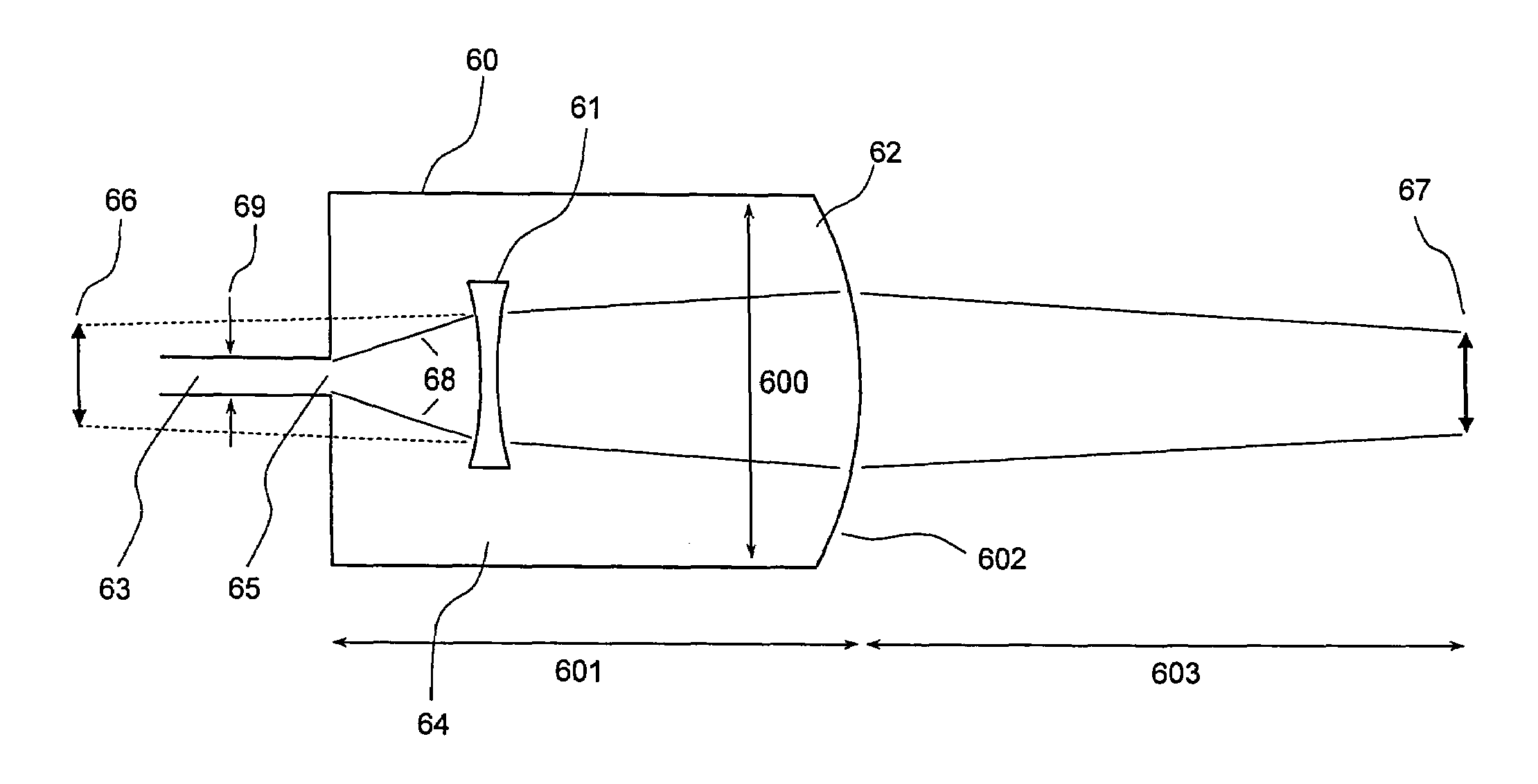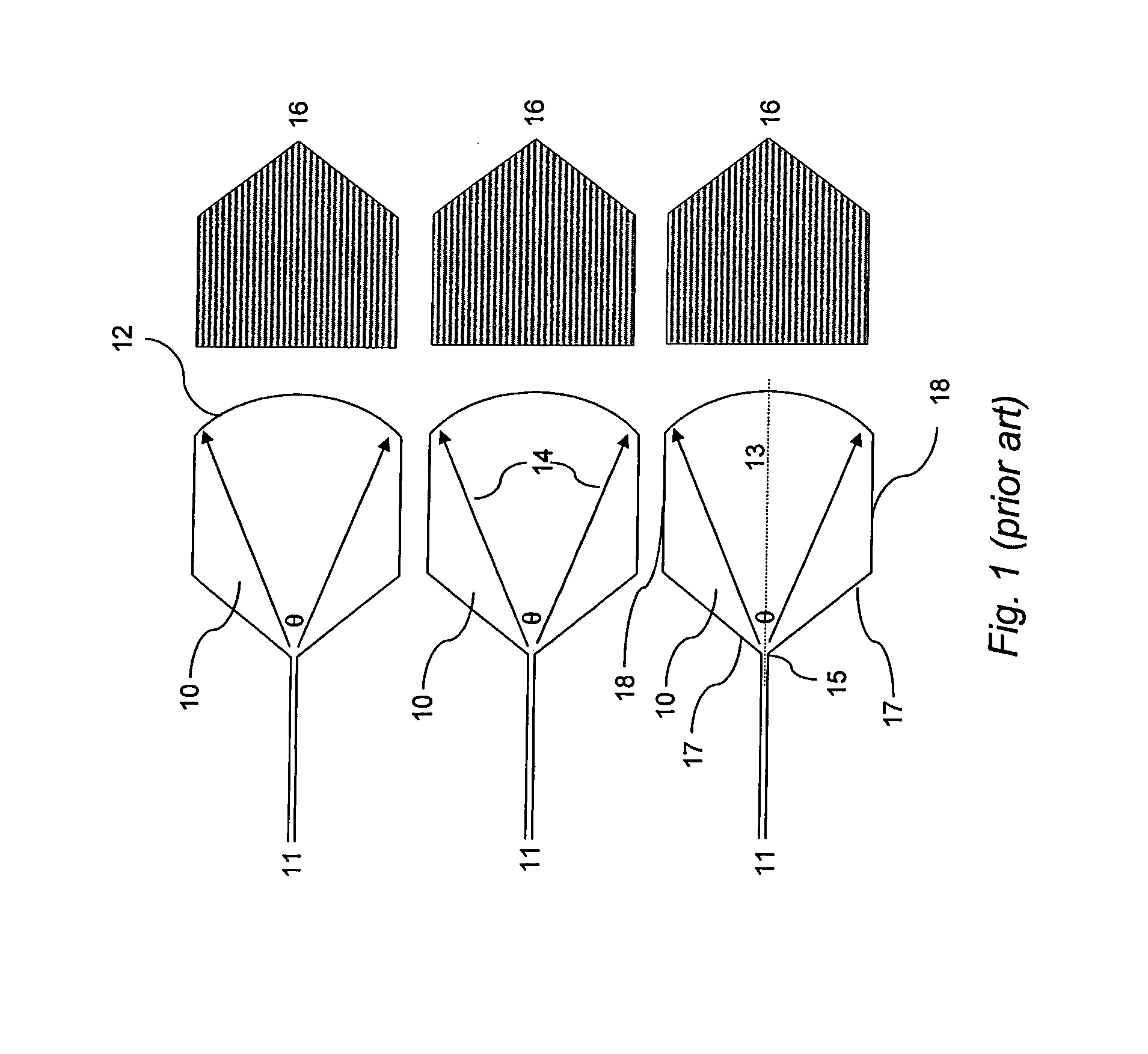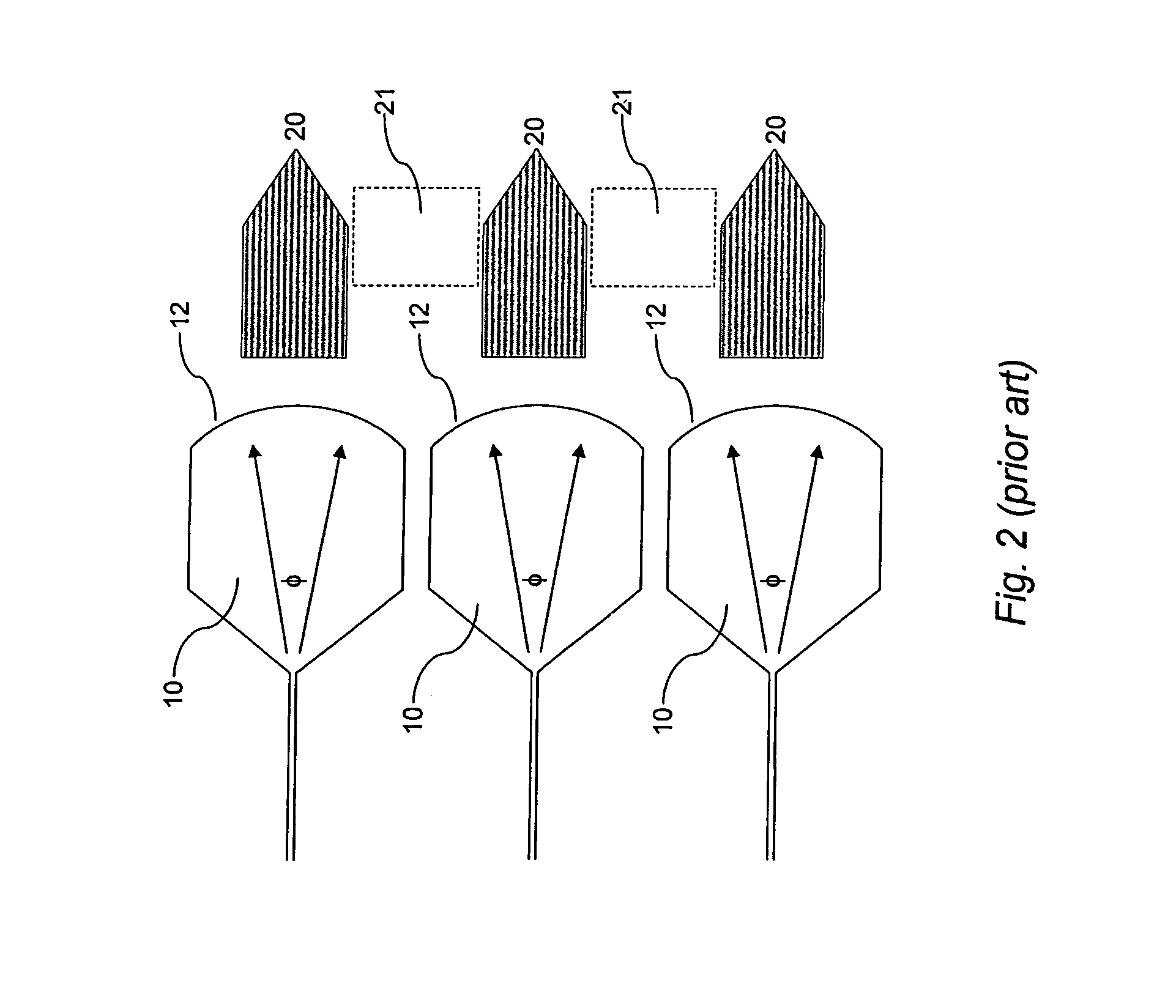Planar lenses for integrated optics
a technology of integrated optics and lenses, applied in the direction of lenses, optical elements, instruments, etc., can solve the problems of reducing spatial resolution, affecting the performance of touch screen, and unable to cool down beams, etc., and achieve uniform power distribution
- Summary
- Abstract
- Description
- Claims
- Application Information
AI Technical Summary
Benefits of technology
Problems solved by technology
Method used
Image
Examples
example 2
[0072]With reference to FIG. 7a and FIG. 7b, the dimensions of an example composite lens 30 according to the first aspect of the present invention, fabricated via the procedure described in Example 1 and comprising a diverging lens 32 followed by a converging lens 31, will be described. With reference to FIG. 7a, the width 70 of waveguide 33 entering composite lens 30 at point 35 is 8 μm. Converging lens 31 has a flared section 71 of length 300 μm, a straight section 72 of length 1160 μm, a width 73 of 750 μm, and ends in a curved surface 74 that is an arc of a circle with radius of curvature 570 μm. With reference to FIG. 7b, diverging air lens 32 is a bi-convex structure with width 75 of 80 μm and length 76 of 16 μm, is composed of two circular arcs 77 of radius of curvature 100 μm and is positioned a distance 78 of 130 μm from point 35. In the geometrical optics picture, diverging lens 32 forms a virtual image between itself and point 35, and this virtual image serves as the obje...
example 1
COUNTER-EXAMPLE 1
[0074]A low refractive index polymer A and a high refractive index polymer B were prepared as in Example 1. To fabricate a simple transmit lens element 41 of the prior art, as shown in FIG. 4b, polymer A was spin coated onto a silicon wafer and cured with UV light from a mercury lamp, to form a lower cladding layer 20 μm thick and with a refractive index of 1.492 (at 20° C. and 850 nm). Polymer B was spin coated onto the lower cladding to form a core layer 11 μm thick, and patterned with UV light through a mask; the unexposed polymer B material was then dissolved in isopropanol to form waveguide 43 with width 400 of 8 μm and lens element 41 with width 401 of 0.75 mm and length 48 of 2.0 mm. Exposed polymer B material had a refractive index of 1.519 (at 20° C. and 850 nm). Lens element 41 ends in curved surface 45 that is an arc of a circle with radius of curvature 0.655 mm. Refraction at curved surface 45 (a single spherical interface) is governed by the following e...
example 3
[0082]A low refractive index polymer A and a high refractive index polymer B were prepared as in Example 1. To fabricate a composite transmit lens element 60 according to the second aspect of the present invention, as shown in FIG. 6, polymer A was spin coated onto a silicon wafer and cured with UV light from a mercury lamp, to form a lower cladding layer 20 μm thick and with a refractive index of 1.492 (at 20° C. and 850 nm). Polymer B was spin coated onto the lower cladding to form a core layer 11 μm thick, and patterned with UV light through a mask; the unexposed polymer B material was then dissolved in isopropanol to form a waveguide 63 with width 69 of 8 μm and composite lens element 60 with width 600 of 0.75 mm and length 601 of 2.5 mm. Exposed polymer B material had a refractive index of 1.519 (at 20° C. and 850 nm). Body 64 of composite lens contains a first converging lens 61 composed of air, and ends with curved surface 602 that forms a second converging lens 62. In this E...
PUM
 Login to View More
Login to View More Abstract
Description
Claims
Application Information
 Login to View More
Login to View More - R&D
- Intellectual Property
- Life Sciences
- Materials
- Tech Scout
- Unparalleled Data Quality
- Higher Quality Content
- 60% Fewer Hallucinations
Browse by: Latest US Patents, China's latest patents, Technical Efficacy Thesaurus, Application Domain, Technology Topic, Popular Technical Reports.
© 2025 PatSnap. All rights reserved.Legal|Privacy policy|Modern Slavery Act Transparency Statement|Sitemap|About US| Contact US: help@patsnap.com



